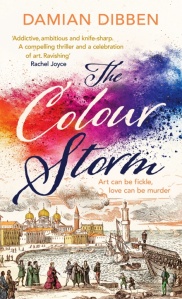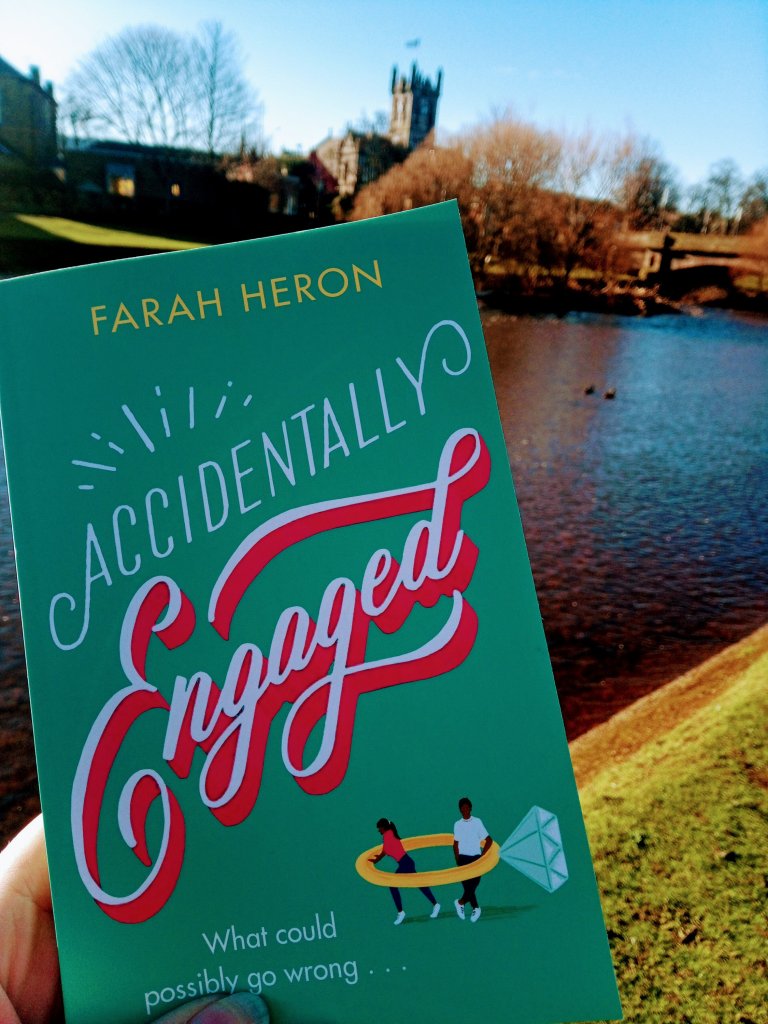He kindly answers a few of my questions.
About the Author
4. Is there anything about the process of publishing a book that still surprises you?
If I could visit one place in history, where would it be?
It would either be Wuthering Heights or Jane Eyre. What magic was going on in that vicarage in Howath? They are both works of genius, peerless pieces of storytelling, crammed with vital, fascinating characters. The emotion explored by the Brontës, and then felt by us readers, is awe-inspiring. I read each at least every other year and they jostle for first and second place in my affections.
Shortly after the Giorgione exhibition I heard Anish Kapoor talking of colour in a radio interview, and in particular how he had copyrighted a new and extraordinary black. The world of colour soon had me enthralled. Where it’s found, how it’s created, or unveiled from rocks and animals and plants, the emotional impact it has had on humans throughout time. I knew that ultramarine was the most prized and beguiling hue of the Renaissance – and I wanted to imagine there was one even more incredible, that it appeared in Venice at this pivotal moment.

Either Rome at the height of the Empire, the end of 1st century AD, to marvel at the power and ingenuity; or France and England in the late1600s. I would pass by Louis XIV’s court at Versailles, to experience humanity at its most mind-boggling lavish, before crossing the channel to London for the age of enlightenment, Newton, Hooke and Wren.
In Renaissance Venice, artist Giorgione ‘Zorzo’ Barbarelli’s career hangs in the balance. Competition is fierce, and his debts are piling up. So when Zorzo hears a rumour of a mysterious new pigment brought to Venice by the richest man in Europe, he sets out to acquire the colour and secure his name in history.
5. What do you do when you aren’t writing? What do you do to relax and get away from it all?
I build things, mostly pieces of furniture; fantastical, beautifully finished objects that I hope will tell a story in the same way a piece of writing can. I trained at art school, designed and built stage sets for a while, and my father and stepfather are both artists and brilliant craftsmen. I love the process of assembling, piece by piece, creating something transporting from nothing.
3. Are you a plan, plan, plan writer or do you sit down and see where the words take you?
He soon finds himself engaged in the fight of his life with rival artists, Michelangelo, Titian and Da Vinci – and caught up in a conspiracy that stretches across Europe and a marriage coming apart in one of the floating city’s most illustrious palazzos.
7. I like to end my Q&As with the same question so here we go. During all the Q&As and interviews you’ve done what question have you not been asked that you wish had been asked – and what’s the answer?
Damian Dibben is an acclaimed author whose novels have been translated into 27 languages and published in more than 40 countries. His series The History Keepers was an international publishing phenomenon. Dibben originally trained as an artist and scenic designer before becoming an actor and screenwriter. He lives on London’s South Bank with his partner Ali and their dogs Dudley, Daphne and Velvet. The Colour Storm is his second novel to explore seismic events of the past, whose influence and power can be felt to this day. His first, Tomorrow, was published to critical acclaim in 2018.
I’m surprised that I will always come back for more. Write another book or screenplay when one is finished. It’s often fiendishly hard to get a novel to work, requiring years of thought and labour. I always think of a sculptor, and the visceral, persistent grind to realise a figure from a slab of marble, one that looks like it took no effort at all to come into the world. Then, actually publishing the book is fraught with many of its own surprises and difficulties. But, the need to always carry on is great. It sounds glib perhaps, but I feel so excited by the world, the great people who have taken chances, struck out and created, I will always want to write about those people and the things they have managed to do.
Will Sybille prove to be the key to Zorzo’s success, or the reason for his downfall?
6. If you could only read one book for the rest of your life which book would it be?
Winning a commission to paint a portrait of the man’s wife, Sybille, Zorzo thinks he has found a way into the merchant’s favour. Instead he finds himself caught up in a conspiracy that stretches across Europe and a marriage coming apart inside one of the city’s most illustrious palazzos.
I plan. At length. But I do change my plan if the story absolutely has to take me that way. But the end point is invariably the same, the one constant in my head from the outset. I’m both an optimist and a realist, so conclusions are vital. Having worked as a screenwriter for ten years, mostly in Hollywood, seeing where words take me was never an option. A story, in the best way possible, had to be machine-tooled. That way of thinking has passed into how I go about novels. That said, it is really gratifying to have the space to let a character breathe and show you some of their more surprising sides. But I’ll never lose sight of a story.
As the water levels rise and the plague creeps ever closer, an increasingly desperate Zorzo isn’t sure whom he can trust . . .
2. What inspired the book?
About the Book
Damian Dibben is the author of Tomorrow and The History Makers series comprising of The Storm Begins, Nightship to China and Circus Maximus . His latest novel, The Colour Storm, was published by Michael Joseph on 23 June 2022.
The Colour Storm is a novel of art and love that imagines the rise and fall of one of the most enigmatic figures in the history of art, Giorgione.
1. Tell us a little about The Colour Storm.
A visit to the Royal Academy in 2016 gave me the idea for The Colour Storm. An exhibition, ‘In the Age of Giorgione,’ charted a pivotal moment in art, and in history. The world was rapidly changing, in the era of print and ideas and global trade. I was struck by how little I knew of this seismic moment, how Giorgione was a link between the old ways of thinking and the modern ones. I wanted urgently to tell this story of an almost forgotten figure who stood his own against the more celebrated figures of the time, Michelangelo, Leonardo, Raphael and Titian.
Giorgione is close to ruin, besieged by fierce competition and mounting debts, when he hears of a fabled colour – a pigment newly arrived in Venice – that might have the power to change his fate. In chasing it, Zorzo becomes entangled with Sybille Fugger, the enthralling but complicated wife of its proprietor.







